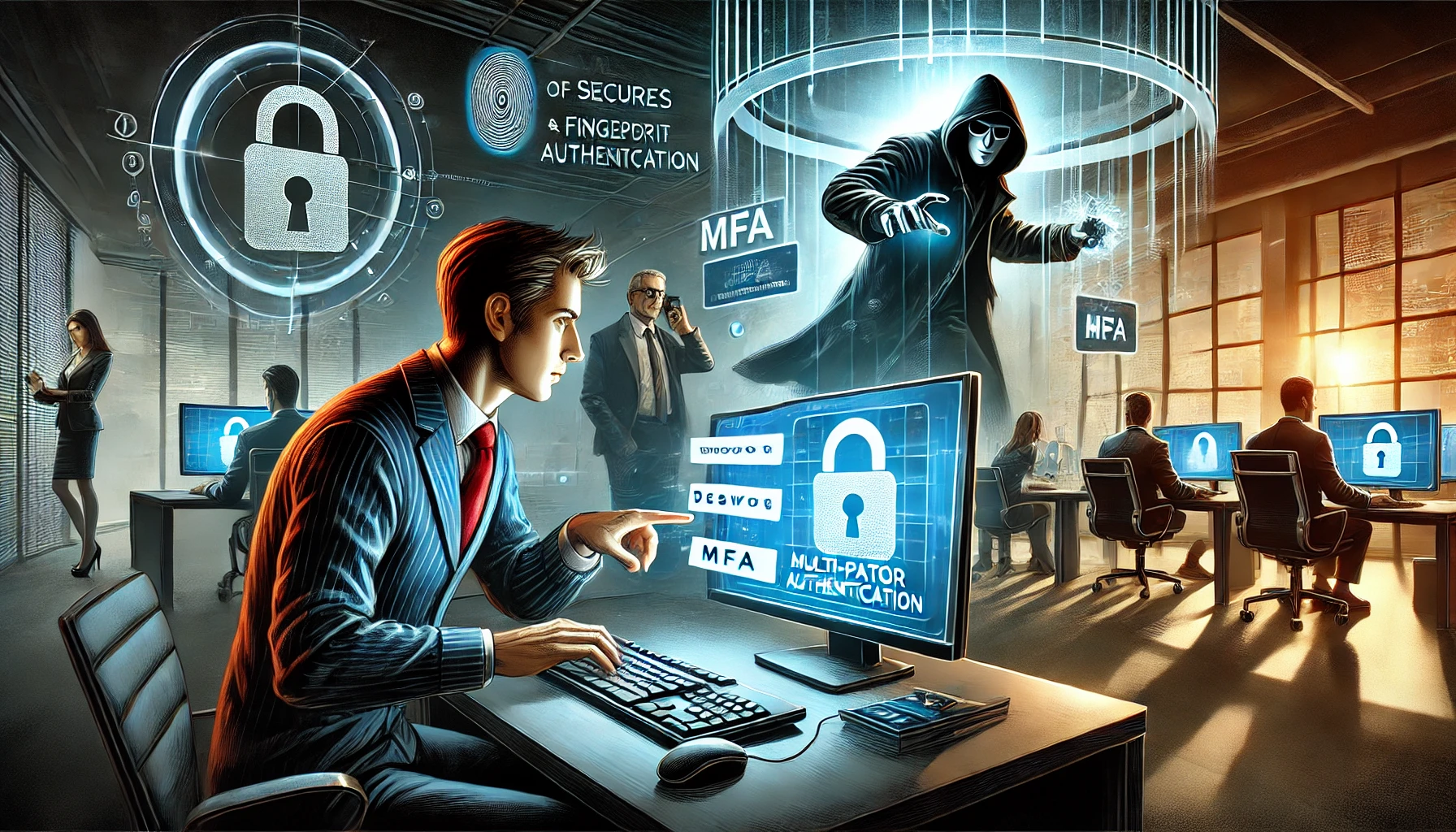The security extra layer your accounts need
9 July 2024

In today’s world, technology is a big part of our lives… From banking to social media, our personal and professional information resides in the cloud, protected by passwords. But as the old adage goes, “a chain is only as strong as its weakest link,” and passwords alone have become that weak link.
Meet Michel Fishblocker, a diligent IT manager at a mid-sized tech company. Michel was meticulous about security protocols, regularly updating passwords, and ensuring the team adhered to best practices. However, as cyber threats evolved, Michel knew that relying solely on passwords was like to locking a door with a flimsy chain.
One fateful day, during a routine security audit, Michel discovered a potential breach. It appeared that a hacker had attempted to access the company’s database. The password was compromised, but fortunately, the hacker had not yet succeeded. Michel knew it was time to act swiftly. Michel called an emergency meeting with the company’s leadership. “We need to bolster our defenses,” Michel declared. “It’s time to implement Multi-Factor Authentication (MFA).” The term was met with nods of agreement from those who understood its significance, and curious glances from those who did not.
Explaining the concept, Michel said, “MFA adds an extra layer of protection. Even if a hacker knows your password, they won’t be able to access the account without a second form of verification, like a fingerprint or a code sent to your phone.”
The leadership team agreed, and the project to implement MFA across all company accounts began. Michel worked tirelessly, coordinating with various departments to ensure a smooth transition. The new system required everyone to not only enter their passwords but also verify their identity through a secondary method.
A few weeks later, Michel received an alarming notification. A hacker was attempting to breach the company’s email server. Michel’s heart raced as they monitored the situation in real-time. The hacker had the correct password but was stopped cold by the MFA system. The additional security measure required a code sent to the user’s phone, which the hacker didn’t have.
The team watched as the unauthorized attempts were thwarted time and again. It was a moment of triumph, and Michel felt a surge of pride. “MFA saved us,” they said, turning to the team. “Imagine the damage if they had accessed our emails.”
The incident served as a powerful reminder of the importance of MFA. Michel shared the story with the entire company, emphasizing how the extra step of verification had protected sensitive information. The team was grateful and more committed than ever to maintaining strong security practices. With the success of MFA implementation, Michel didn’t stop there. They knew that security was an ongoing battle. Michel initiated regular training sessions to educate his coworkers about the importance of cybersecurity and how MFA played a crucial role.
During one session, Michel illustrated the concept with a simple analogy: “Think of your password as the key to your house. MFA is like having an additional security system that requires a fingerprint scan to enter. Even if someone steals your key, they can’t get in without the fingerprint.” These sessions became popular, with employees sharing their own experiences and tips for staying secure online. Michel also introduced simulated phishing attacks to test the team’s vigilance. The goal was to create a culture where security was everyone’s responsibility.
Michel’s advocacy for MFA didn’t stop at work. They began incorporating it into their personal life, securing email, social media, and banking accounts with MFA. Michel even held workshops for friends and family, spreading the word about the importance of this additional security layer. One evening, Michel received a frantic call from their friend Jamie. “Michel, I think someone’s trying to hack my Instagram account. I keep getting notifications about login attempts.” “Do you have MFA enabled?” Michel asked. “No,” Jamie admitted. “Alright, let’s fix that,” Michel replied. They guided Jamie through the process of setting up MFA, explaining each step and its significance. The next day, Jamie called back, relieved. “Thanks, Michel. I feel so much safer now.”
Months passed, and the company’s security posture had never been stronger. Michel’s efforts had paid off, and the team was more vigilant than ever. The success stories of thwarted hacking attempts continued to pour in, each one reinforcing the value of MFA.
Disclaimer: This story is a fiction created for illustrative purposes. Names, characters, businesses, places, events, and incidents are either the products of the author’s imagination or used in a fictitious manner. Any resemblance to actual persons, living or dead, or actual events is purely coincidental. The narrative is intended to highlight the importance of cybersecurity and does not represent any specific individuals or entities.